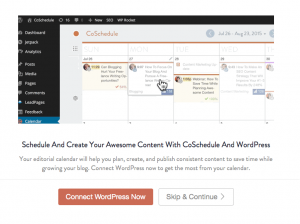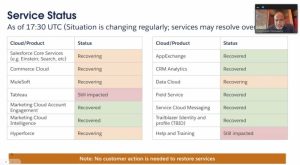— April 7, 2018
How to Create Stronger Customer Relationships and Sell More With Your Business Copy
These copywriting tips for startups are designed to help you improve your messaging on a shoestring budget.
When you’re launching, the budget is tight. Every fork in the road can potentially mean money spent. It’s tough to know what’s a wise investment, and what is just noise.
Let me begin by explaining the importance of copywriting. As you launch your company, you’re likely jumping into a crowded field. Good copywriting will improve your brand messaging, give you a distinct voice amongst this competition, and most importantly, help you convert more customers. But it is important to gain a firm understanding of how to craft a message that resonates with your audience. That’s where the below copywriting tips for startups come into play.
20 Killer Copywriting Tips for Startups
Write Conversationally – I know it’s tempting to load people up with every new feature that comes with your product or service. I know you’re passionate about your industry and everything that you do. But here’s the thing: you have to approach your audience where they’re at. Talk to them how you would while out for a cup of coffee.
Eliminate all the industry geek speak. If you have to use technical terms, define them. And learn how to write with a casual tone. Despite what your English teacher may have told you, it’s perfectly fine to use contractions and begin sentences with conjunctions (and, but, or). Writing conversationally helps you identify with your audience, and achieve a friendly tone through the tone of your writing.
Learn How to Write a Great Headline – The old Chicago advertising mogul David Ogilvy knew the importance of headlines. He knew that people were five times more likely to read the headline than the body copy.
While he was working with print ads, headlines are extremely true for web content, blogs, landing pages and other marketing collateral. In short, your headline needs to pop. It needs to entice people to read more. Great headlines can cause people to convert on their own. Spend some time learning the triggers that will help people buy. Creating a powerful headline is one of the most effective copywriting tips for startups because of what it can do to engage readers.
Become a Master with Emotion – As much as we try to convince ourselves otherwise, people buy based on emotion. If you can invoke fear, greed, happiness and other emotions into your copywriting, you’ll create more sales. It’s that simple. Make people understand how your product or service will make them feel.
Social Proof – You may just be starting out, but this one of the most important copywriting tips for startups. The second you have happy early adopters or beta users, you can place their testimonials on your web pages and landing pages. Use them in your sales letters. You are your own best advocate, but happy customers are neutral third parties. When they speak in your favor, it carries a heavy weight. You can also use LinkedIn recommendations in this way.
Tell a Compelling Story – People are suckers for a good story. Your about page is a great place to elaborate on your personal story. This can differentiate you from others. Blog posts and case studies can also offer insight into customer success stories. People remember a great story more easily than they’ll remember a data point. A compelling story is burned into our brains and keeps your company top of mind.
Back Up Your Claims – That being said, data has its place in your copy. When you get specific and use numbers to tell people how big the problem is that you solve, or your success rate for solving it, that gives you instant credibility. You have done your research on the problem and it shows a clarity of purpose. Numbers and data are persuasive.
Maintain Focus – Your web page, blog post or other marketing collateral should have one central idea behind it. All of the content within should strengthen that idea. Think back to high school English class and those darned five-paragraph persuasive essays that your teacher had you write.
If anything you wrote failed to bolster your argument, it was eliminated. It’s the same thing here. Keep your copy centered around your main idea. If you have something strong that doesn’t necessarily support your main idea, you may have an idea for another blog post, or another marketing piece. You may simply need to move it over.
Make Your Copy Visually Friendly – Your readers will likely give your copy a few short seconds before they determine whether to continue. It’s a good idea to make it as visually appealing as possible. This means a few different things. First, use more photos. An extended blog post should be broken up with pictures so it feels less intimidating. You can also insert infographics to help you tell your story in a visually-friendly way.
The copy itself should be in short, concise paragraphs. You can also vary the length of sentences. If you have a long one that is extended by a few commas, follow it with a short punchy sentence. Bullet points, lists and subheads can also break your copy down and make it less intimidating.
Keep Your Copy Clean – While your readers are likely drawn to casual copy, it’s important that it still maintains a high level of professionalism. Make sure you understand the difference between formal and professional. Your copy doesn’t have to (and probably shouldn’t) sound like an academic dissertation.
At the same time, it still needs to be clean when it comes to grammar and spelling. When your copy is riddled with these types of mistakes, it distracts from your main point. You don’t want someone thinking about the wrong use of the word “there” when they should be thinking about how your widget can help them.
Too many mistakes can cost you potential customers. You don’t have to be perfect, but you need to be consistent. There are ways you can improve. Use your word processor spell check, or a third party program such as Grammarly. Have someone look at your copy before you publish it. Hire a copy editor. All these things can help.
Write a Strong About Page – Your about page is arguably your most important piece of marketing. As part of the purchasing process, your reader wants to know “Why you?” Your about page is the place to answer what makes you qualified to make your claims, and what makes you different. It’s the place where you can differentiate yourself and put a face on your business.
A good about page will help your business establish the crucial likeability and trust that it takes to strengthen customer relationships. This is the place to tell people what you did before launching your startup. It’s the place to tell people what your passions are, how you got started professionally, and build the story behind your brand.
I know that the temptation is to skirt all things personal when it comes to your business website, but this is a mistake. Your readers want to know what makes you different. If you can give them a compelling answer to the “Why you?” question, you’ll advance your cause. Whether you are in the B2B or B2C space, a powerful about page is critical.
Put Yourself in Your Readers’ Shoes – This is hard. Really hard. But for just a moment, discard every last bit of professional and industry insight you may have. Think about the situation from your readers’ perspective. What are your potential customers looking for? What problems do they have that they are looking at you to solve?
It’s really that simple. Show them that you understand their situation and that you are the best one to solve it. This involves empathy. Don’t talk with them about all the latest techy product features. Tell them how their lives will be better.
If you want to know how well you are doing this, ask someone outside your industry to review your copy before you publish it. Gauge their reaction and take their advice.

Define Your Ideal Customer – It’s important to understand exactly who you are going after. When you can specifically target your audience, you can adjust the language and approach accordingly. (For example, a blog post about copywriting tips for startups will sound different than a post about copywriting tips for medium-large businesses.)
Business to business copy is going to sound different than business to consumer copy. Once you hone in on who your users are, you can find their hobbies, interests and passions. You may find new ways to approach them and connect. This is one of the simple but overlooked copywriting tips for startups.
Be Relevant – Scour the magazines, websites and books both inside and outside your industry and mine them for blog ideas. Connect two previously unrelated subjects. There are new lessons out there everywhere, we just need to know where to look for them. It’s important to stay curious and passionate and let that show in your posts.
This keeps your marketing compelling and different. It can elevate you above the industry horse race, where you feel the need to do things solely because your competition is.
Include a Time Element – If your product or service is designed to create a desired change for your customer, put a timetable on it. Instead of telling people that your product can change their world, tell them that your product can change their world in as little as 14 days. A short time frame can make all the difference in the world.
Hone in on the Benefits – Your readers don’t care about a V8 engine on their convertible. They care about the way that the wind feels in their hair when they open it up on the freeway, hitting 75 mph. They don’t care about the size of the RAM in their computer. They care about being able to leave 20 tabs open while watching YouTube videos.
Tell people how your product or service improves their lives. These are the product benefits. This is more important than the latest tech features.
Ask Questions – Questions can be a powerful tool to guide your readers in the desired direction, but you have to use them the right way. Take a look at these questions:
Do you want to make more money?
Do you want to lose 20 pounds in 30 days?
Do you want more customers?
Are you concerned about retirement?
The answers to all these should be yes. Now look at these questions:
Would you like to call us today?
Do you think you can benefit from this?
When would you like to receive help?
These questions introduce doubt into the equation. Readers are just as likely to answer them negatively. Make sure your questions lead your reader toward taking the desired action.
Consider Search Engines – First and foremost it’s going to be people who buy your stuff. Your copy has to be enticing to readers. But the interest of readers and search engines are not mutually exclusive. What terms and phrases do you want people to find your marketing copy by? Make sure to sprinkle them into your copy. Don’t overload the search engines, but make sure it’s present.
If you’re using WordPress, you can download an SEO plugin such as Yoast to make sure you are taking the right steps with your web copy and blogs. Past that, make sure you are researching the latest search engine marketing trends at places like Moz, Content Marketing Institute, and Hubspot.
This is an important facet of digital marketing, and one of the most important copywriting for startups.
Experiences and Results – People aren’t necessarily going to purchase your product for the latest and greatest features. They’re going to buy your product because you produce a better experience, or you produce better results. This is why social proof and data are so important. They strengthen your position.
Keep People Reading One Sentence to the Next – Once people get through your headline and lead, the goal is to keep them reading from one sentence to the next. Really this just involves keeping the rest of these tips in mind. Make sure you are writing focused, and concise copy. Make sure it is entertaining and valuable.
Don’t give your readers a reason to walk away or try a competitor. Keep them moving through your copy. Get them down to your call to action. Fast. This is one of the simplest but most important copywriting tips for startups that there is.
Create Powerful Calls to Action – Your reader doesn’t know what you want them to do, unless you tell them. But instead of a simple “Hey, buy our stuff!” at the bottom of the page, think of your call to action like a lawyer’s closing argument.
You could go on washing your dishes the same way – after all you’ve done it your whole life. But why would you want to do that, when you know there’s a sponge out there that kills 95 percent more of the dangerous food bacteria that’s coating your dirty dishes.
This is completely made up, off the top of my head. But it uses a strong and compelling argument to compel people to buy a more powerful kitchen sponge. Think about the change you are asking people to make. Remind them why they need to make it. Reiterate the value in taking action.
Then remind people to buy now, call now, download now, or whatever the need may be. They got all the way through to read your call to action. Make sure that you give them a reason to act.
Conclusion
The Internet is an overwhelming and crowded place. The great thing is you can do business with people anywhere. The challenging part of that equation is it creates more competition. Your marketing copy can differentiate you from the competition. Use these copywriting tips for startups to improve your business’s message and sell more.
Business & Finance Articles on Business 2 Community
(237)







